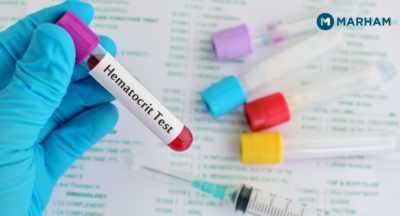The Hematocrit test is a blood test that is used to calculate the total amount of red blood cells in the body. It is called the HCT, Packed-Cell Volume (PCV), or Erythrocyte Volume Fraction test.
Abnormal HCT means a blood disease or any underlying health condition. In such circumstances, patients need medical attention and care.
What is the normal range of hematocrit test?
Hematocrit levels not only depend on the health condition but also on age and gender. Depending upon the demographic groups, these HCT levels are considered normal:
|
Demographic Groups |
HCT Levels |
|
Male |
41% – 50% |
|
Female |
36% – 44% |
|
Infants |
32% – 42% |
| Newborns |
45% – 61% |
What are the causes of high hematocrit?
High HCT indicates higher amounts of RBCs in the bloodstream. A number of factors including both medical and individual practices can result in high HCT. A few of such factors include:
- Cardiac issues: People with heart issues — such as arrhythmia, valve disease, or hypertension have increased production of RBCs.
- Dehydration: Water content in the body begins to drop, causing dehydration. It decreases blood circulation, stimulating the production of RBCs.
- Unhealthy lungs: Poor functioning of the lungs due to scarring or thinning of the tissues obstructs the flow of red blood cells. This raises the production of red blood cells.
- Obstructive sleep apnea: The blockage of airflow in the lungs while asleep diminishes oxygen levels. This raises RBCs in the bloodstream.
- Smoking: Excessive smoking multiplies the production of the kidney hormone erythropoietin. This hormone rises the levels of red blood cells.
- Medication: Some medicines, especially those considered androgenic hormones, increase the production of RBCs in the bloodstream.
- Carbon monoxide: Increased carbon monoxide due to inhalation of polluted air reduces blood plasma. This increases the production of blood cells, causing high HCT.
How to decrease high hematocrit levels?
Patients can reduce high HCT levels by eating a nutrient-rich diet and opting for a healthy lifestyle, which includes;
- Avoid excessive smoking. Use a face mask to avoid polluted air entering the lungs.
- Consuming a healthy diet, — comprising of fruits, leafy green vegetables, whole-grain, or healthy fats
- Drink water and fruit juices to promote hydration.
What are the causes of low hematocrit?
Certain health conditions or accidental injuries can inhibit red blood cells or cause internal or external bleeding. This decreases blood count, resulting in low HCT. Some of such major causes of low HCT include:
- Anemia: The deficiency of hemoglobin in the blood can result in different types of anemia, — including aplastic anemia, iron deficiency anemia, sickle cell anemia, thalassemia, or vitamin deficiency anemia.
- Bone marrow disorders: Patients suffering from disorders that affect bone marrow — such as leukemia, lymphoma, multiple myeloma, or sickle cell disease have diminished RBCs.
- Renal disorders: Those patients who suffer from underlying kidney disorders — such as chronic stones, cancer, or polycystic kidney disease have shown a serious decline in the number of healthy RBCs.
- Hepatic disorders: Liver issues — especially liver cirrhosis, hepatitis, or liver cancer can reduce red blood cells, causing a severe drop in complete blood count.
- Autoimmune disorders: Different autoimmune health conditions — including Addison’s disease, celiac disease, grave’s disease, or multiple sclerosis experience drops down the RBCs count.
- Malnutrition: Unhealthy diet doesn’t include essential nutrients, which leads to malnutrition. This reduces normal amounts of red blood cells, disrupting the normal functioning of the body.
What to increase low hematocrit?
A diet containing essential nutrients such as proteins, vitamins, minerals, or zinc can help increase HCT. Such foods include:
- Increase the consumption of red meat, especially liver
- Consume legumes namely lentils, peanuts, peas, and beans
- Add dried fruits — like apricot, walnut, almond, prunes, or raisins to daily intake
- Incorporate seafood such as fish, oysters, or shrimp in the diet
- Eat green leafy vegetables — including spinach, kale, cabbage, watercress, or lettuce
- Have vitamin C-rich edibles — such as lemon, orange, or tomatoes
How is the hematocrit test carried out?
An HCT test helps doctors evaluate the complete blood count. It helps the diagnosis of underlying health conditions such as anemia, leukemia, infections, and different types of cancer. A phlebotomist will carry out the HCT to evaluate the patient’s health as follows:
- A blood sample is taken from the patient’s vein.
- Extracted blood is transferred to the capillary tube, ensuring the absence of air bubbles.
- The capillary tube containing blood is carefully placed in a centrifuge machine. It spins the tube at high speeds, separating the blood content. The denser red blood cells settle at the bottom of the tube.
- The red blood cells are separated and then calculated using a specialized hematocrit reader.
After blood sampling, the patient may experience pain, bruising, and lightheadedness for a short time period.
Get your overall health evaluated by booking an immediate Hematocrit test with the best medical laboratory at discounted rates.

